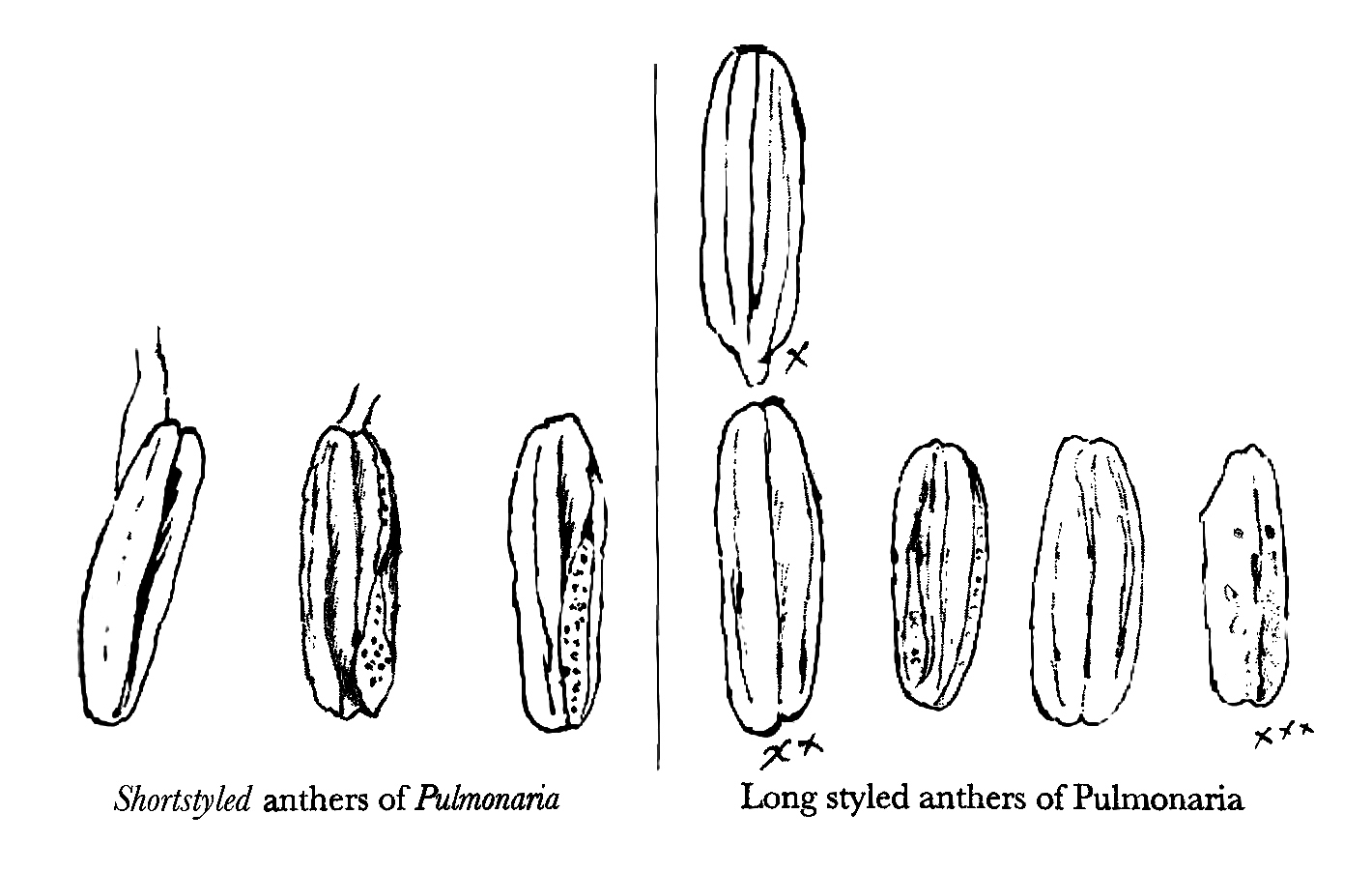From W. E. Darwin 18 May [1864]1
Southampton
May 18
My Dear Father
I send you pulmonaria anthers, I took them out of buds.
they gradually opened on the gum drying, and the Long styled marked xxx was quite open.2
the one marked xx I saw was much larger than 3 of the others. So I took it off the glass after drawing and compared its pollen with long styled pollen, and there is no doubt that it is long styled.3 x I know also to be long styled, & I am pretty nearly sure that x & xx did not come from the same plant, by the help of drawing or rather making marks under camera lucida, & also counting with my eye & marking on paper; I have made a rough calculation of the comparative bad & good pollen in the long & short.4 of course it cannot be accurate, as in the case of little clusters of them I had partly to guess, also I dare say in some cases pollen tipped up on end or squashed may have mislead, but there is not the least doubt that there are many more imperfect in the long than in the short.
I took pollen from 2 plants of each kind. I found as follows
in Short styled out of 265 pollen grains
247 were good
18 — bad
Long styled out of 193 pollen grains
140 were good
53 — bad.5
if you like, I will measure some more, if you think of any better way please tell me. I cannot judge wh. has most pollen.6
I got Mamma’s letter about Menyanthes.7 I have written to the isle of Wight to find a station, & I am going off to Lyndhurst8
Your affect son | W E Darwin
[Enclosure]9

CD annotations
Footnotes
Bibliography
Forms of flowers: The different forms of flowers on plants of the same species. By Charles Darwin. London: John Murray. 1877.
Summary
Sends Pulmonaria anthers, with measurements of styles and pollen counts.
Letter details
- Letter no.
- DCP-LETT-4500
- From
- William Erasmus Darwin
- To
- Charles Robert Darwin
- Sent from
- Southampton
- Source of text
- DAR 110: A83–6, A94
- Physical description
- ALS 7pp † diag 1p
Please cite as
Darwin Correspondence Project, “Letter no. 4500,” accessed on 19 April 2024, https://www.darwinproject.ac.uk/letter/?docId=letters/DCP-LETT-4500.xml
Also published in The Correspondence of Charles Darwin, vol. 12


